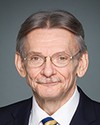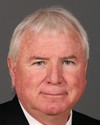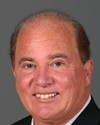Not yet.
Evidence of meeting #25 for National Defence in the 39th Parliament, 1st session. (The original version is on Parliament’s site, as are the minutes.) The winning word was back.
A recording is available from Parliament.
Evidence of meeting #25 for National Defence in the 39th Parliament, 1st session. (The original version is on Parliament’s site, as are the minutes.) The winning word was back.
A recording is available from Parliament.
Commander of Canadian Forces Health Services Group and Director General of Health Services, Department of National Defence
We deploy preventative medicine technicians on all of our missions. Other than looking out for mosquitoes, they check the water and watch out for sanitation issues, and all those things. They look for any place where we might have trouble on a regular basis.
NDP

David Christopherson NDP Hamilton Centre, ON
I heard you say earlier that if you had any backfilling to do you'd do it on the Canadian side and make sure the front-line health services were there in Afghanistan. But if there were another mission, would you have the ability to maintain adequate medical services in Afghanistan and back here, and open up another front? Are you in a position where you would have to say the risks were too high and you would recommend no, from a medical services point of view? If not, how would you go about sort of cobbling something together? What steps would you take?
Commander of Canadian Forces Health Services Group and Director General of Health Services, Department of National Defence
As I said in my opening comments, we would first need to know what the mission was: where is it, what are we being asked to do, how big is it, and all of those kinds of things. So it depends. Are our allies there? Do they have resources there? On each and every one would we have to know all of the answers to all those questions before we could answer.
Could we do another Afghanistan-type mission with the same capability? No. Could we do something else? Yes. It just depends on where it is, what we're being asked to do, and who else is coming to the party with us.
NDP

David Christopherson NDP Hamilton Centre, ON
How does it work if you're told there is a mission coming, or if you're being asked for input on what your abilities are? What are the steps you take to go about this, given that you're already strained? Where do you begin?
Commander of Canadian Forces Health Services Group and Director General of Health Services, Department of National Defence
It isn't just us. There's always an operational planning process that goes on. It's the same for the combat arms. The army, navy, and air force go through the same planning process. The support logistics community goes through the same process. These missions are all analyzed by the senior staff, and we add our input on whatever we're asked to do. Others make the decisions as to whether we're going or not. They don't take these decisions lightly. All of the input is factored in.
We have both been in the position of providing operational advice to the senior staff from a medical perspective, and we give them exactly what we can or can't do at that particular moment.
NDP

David Christopherson NDP Hamilton Centre, ON
You said you were pulling out all the stops to attract doctors, including having contracts with civilians and signing bonuses. How much is the signing bonus, by the way?
Commander of Canadian Forces Health Services Group and Director General of Health Services, Department of National Defence
It is $80,000 for two years, and $225,000 for four years for physicians.
Commander of Canadian Forces Health Services Group and Director General of Health Services, Department of National Defence
It varies.
Canadian Forces Surgeon General, Department of National Defence
It starts at $135,000 for captains and goes up fairly sharply from there.
Commander of Canadian Forces Health Services Group and Director General of Health Services, Department of National Defence
It depends on whether you come in as an experienced general practitioner or a specialist. That is the base pay if you're coming right out of medical school or residency with no experience.
NDP

David Christopherson NDP Hamilton Centre, ON
I gather you're scouring Canada. You're probably scouring the world.
This isn't a trap question at all, but in my home town of Hamilton we have a group working with city hall, the chamber of commerce, and the local academy to do everything we can to encourage.... We need family doctors, just like probably every other community around this table.
If you can't comment, I'll accept that too. This is not meant to be anything other than the fact that I'm curious.
Given the means of the armed forces versus Hamilton, it leaves us with a bit of a dilemma. While we're trying to attract family doctors and other doctors to our communities, and the Canadian armed forces are also using all the tools they have available to attract those same doctors. That creates a bit of a conundrum here in Canada, doesn't it? We're having one between communities and we don't like it, but that's the way it is. Now I'm becoming more aware that there's also this major attraction to the armed forces.
Canadian Forces Surgeon General, Department of National Defence
I hate the fact that in Canada you seem to have to rob Peter to pay Paul on health care human resources. We wish it were not so, but we have our distinct responsibility.
The Canadian Medical Association has about 60,000 members, so that's roughly how many physicians there are in Canada. We have 180 physicians, so in terms of the greater Canadian health care landscape we're a fairly small player. We have been in a position sometimes, oddly enough, of competing with ourselves. In order to hire the civilians we need we've had to offer salaries that are so attractive that in some cases some people have taken off their uniforms and become civilians. That was also not helpful.
We are a bit sensitive to those kinds of problems, but I think we provide a valuable service to Canadians. Certainly when people leave us after their minimum engagement, or if they get a pension after 15 or 20 years of service, we return a very valuable resource to the Canadian health care system.
NDP

David Christopherson NDP Hamilton Centre, ON
No question. I know a nurse in her late thirties who joined the navy, I believe. She is now a doctor in Hamilton. She did her service and now is providing family service.
Are you doing anything with foreign-trained professionals within the armed forces to acknowledge credentials from Canadians who otherwise are seen to be doctors around the world but haven't quite got through our credentials system? Do you have an independent process within the armed forces for that?
Commander of Canadian Forces Health Services Group and Director General of Health Services, Department of National Defence
We are always looking out for physicians who meet the qualifications. We take foreign graduates, but we have an evaluation process, which, again, is the civilian evaluation process. We don't do it ourselves. Most of what we do in the realm of health professionals is always partnering with some institution in this country, whether it's a particular university or a particular program. We have used the McMaster's program. We have also used the University of Alberta and the University of British Columbia. We use a lot of them to assess those people to see if they are suitable, or, if they need extra training, how much training and where we can place them.
Canadian Forces Surgeon General, Department of National Defence
The bottom line is we need licensed physicians and we don't control the licensing processes.
Conservative

The Chair Conservative Rick Casson
Does anybody have one short question?
Mr. Bachand, and then we'll wrap up.
Bloc

Claude Bachand Bloc Saint-Jean, QC
In any conflict, death toll statistics always attract attention. As of this morning, the total stood at 44. Injuries, however, are rarely mentioned. I would like to ask you three brief questions on this subject.
Firstly, how do you define an injury? If somebody were to cut himself with a kitchen knife while cooking on a mission, would he be considered injured personnel?
Secondly, how many people have been registered injured in Afghanistan thus far?
Finally, I imagine you have a scale to classify the severity of injuries and to allow you to differentiate between minor, relatively serious and serious injuries.
Could you please provide us with some information on these three points?
Canadian Forces Surgeon General, Department of National Defence
Thank you, sir.
I will again answer in English for the sake of my sanity and clarity.
When we look at the statistics of what happens in a theatre of operations, there are several categories you put members in once they've been exposed to trauma. They can be killed in action, and, by definition, killed in action means essentially that from the point at which any medical person touched them, vital signs were absent. They were dead from the first point of contact with the medical system.
They can be classified as died of wounds, which is a statistic you don't hear very much any more. Those are people who have succumbed to their injuries but after they started being treated by the health care system.
You can be wounded in action, and that means almost what it says: as a result of being in direct contact with an adversary, you sustained a wound. It's not necessary that it be a rifle bullet, a piece of shrapnel, or a blast. It could mean that your vehicle veered off the road, rolled over, and you had a motor vehicle accident--you're still wounded in action.
The other big category is disease and non-battle injury. Again, it's as it sounds. Either you became ill, rather than injured, or you had an injury but that injury was sustained while walking, falling in the shower, or cutting yourself with a knife in the kitchen. That would be a non-battle injury. The statistics we have are 171 wounded in action, and I don't believe that includes disease and non-battle injury.
Commander of Canadian Forces Health Services Group and Director General of Health Services, Department of National Defence
No, it does not.
Canadian Forces Surgeon General, Department of National Defence
Disease and non-battle numbers are much, much higher.
Canadian Forces Surgeon General, Department of National Defence
They can be mostly minor things, where they've stayed in theatre and have gone back to work. Perhaps they had a cold.
Commander of Canadian Forces Health Services Group and Director General of Health Services, Department of National Defence
Ever since we've collected statistics, I think the average runs about 80%.